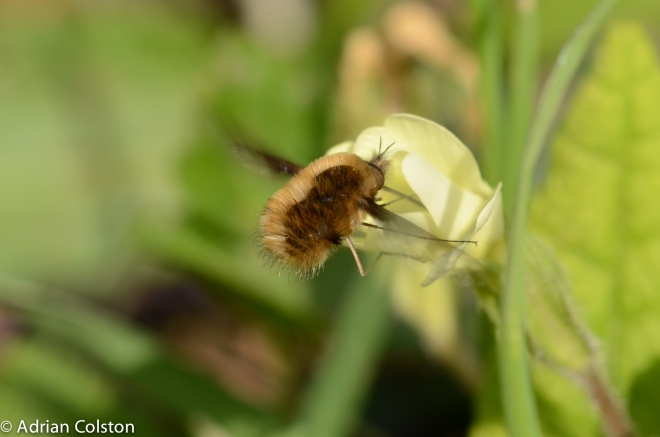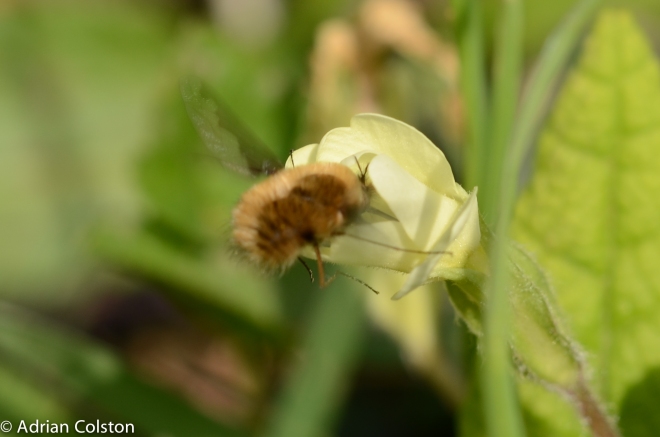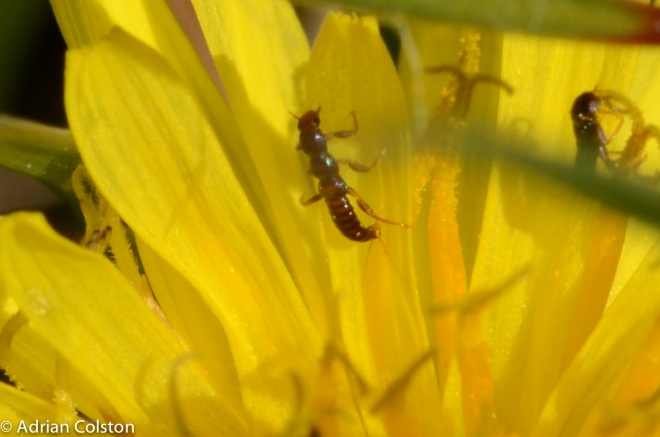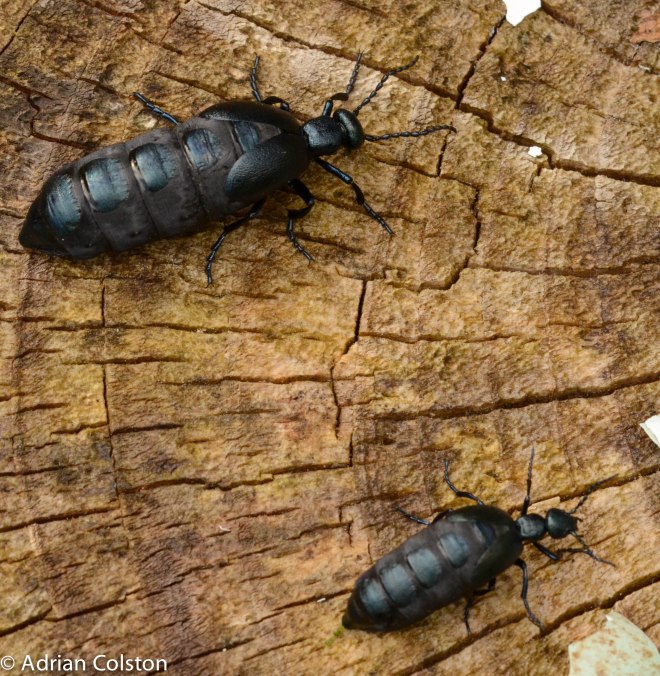Think again – Dartmoor (and the UK generally) has in fact got two species of native oak (Genus Quercus). One species the Pedunculate or English oak (Quercus robur) is the species of lower more nutrient rich ground whilst the Sessile oak (Quercus petrea) is an upland species found on nutrient poor soils. Sessile oak is the quintessential species of Dartmoor’s river valleys (e.g. the Teign, the Dart and the Lyd). With a bit of practice and knowledge it is quite easy to tell the two species apart.
These are the leaves of Pedunculate oak (Q. robur) – note the leaves have very short stems where they meet the twig/branch and have little ears called auricles where they meet the twig – you can see the auricles at the centre of this photo where the four leaves join the branch
 A single Pedunculate oak leaf – note no stem to the leaf – the auricles are at the left end of the leaf in this picture. In addition the underside of the leaf and its veins are hairless.
A single Pedunculate oak leaf – note no stem to the leaf – the auricles are at the left end of the leaf in this picture. In addition the underside of the leaf and its veins are hairless.
 These on the other hand are the leaves of the Sessile oak (Q. petrea). Note there is a stem over 1cm long which joins the leaves to the twig
These on the other hand are the leaves of the Sessile oak (Q. petrea). Note there is a stem over 1cm long which joins the leaves to the twig
 A single leaf of Sessile oak – stem and no ears! On the underside of the leave along the veins are numerous star shaped hairs.
A single leaf of Sessile oak – stem and no ears! On the underside of the leave along the veins are numerous star shaped hairs.
There is another essential difference between the two species but one which I won’t be able to show you until the autumn – this involves the stalk on the acorns. The Pedunculate oak has a long stalk to connect the acorn and cup to the twig whilst the Sessile oak’s acorns and cups are stalkless.
In summary then….
Pedunculate oak: short stems to the leaves, auricles, hairless and long stalk on the acorns
Sessile oak: long stems to the leaves, no auricles, star like hairs on the undersurface veins, no stalks to the acorns
Where to see the two species: there are plenty of Pedunculate oaks at Parke (but beware the parkland contains a number of exotic species of oak too (e.g. The Lucombe Oak, Turkey oak and Holm oak) but they look very different. You can find Sessile oaks in the Teign Valley including Fingle Woods, Lydford Gorge, Hembury Woods and Holne Woods. These woods also contain some Pedunculate oak so are perfect places to practice your ID skills!

















































